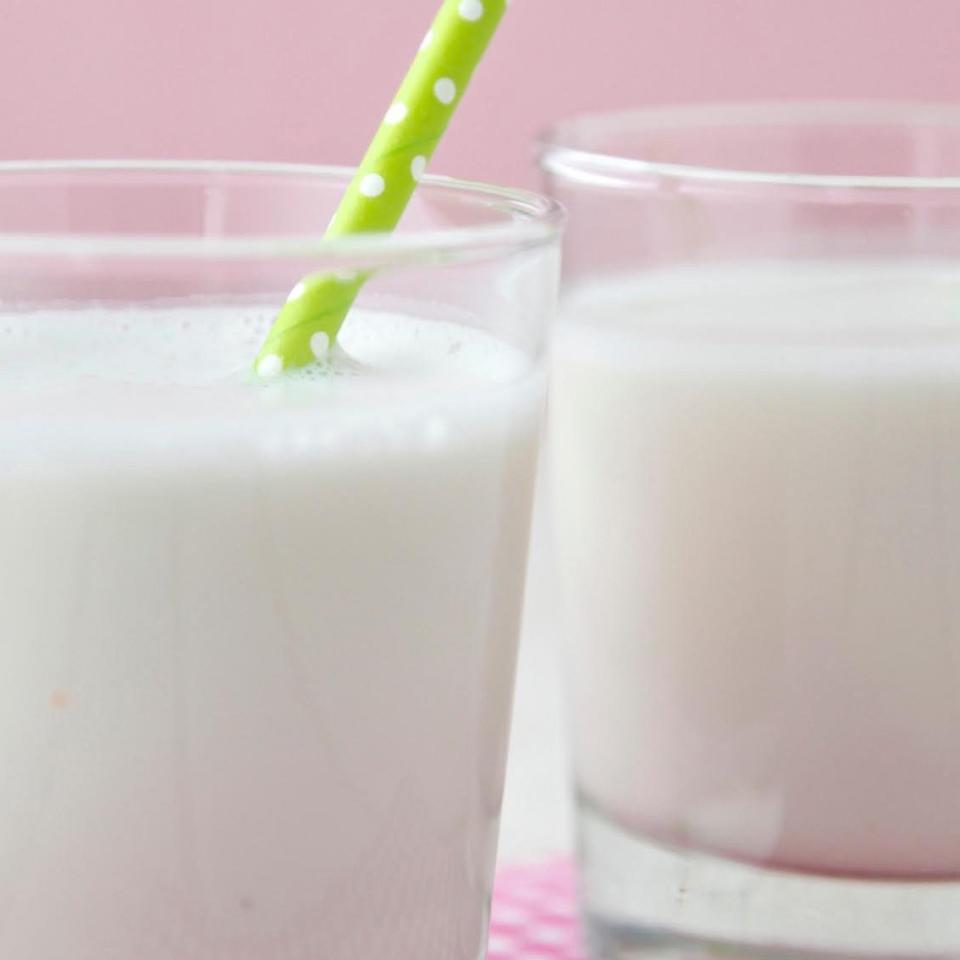Can You Make Dairy-Free Alternative Milk In a Regular Blender?
First we fell in love with soy milk, then we obsessed over almond milk, and now we can’t get enough oat milk. Last year, dairy milk sales decreased by $1.1 billion, according to an announcement from the Dairy Farmers of America. But the market for nut milk and other alternative milks continues to grow, and it’s only a matter of time before the next cool alt-milk takes over. I love 'em all, I’m sure I’ll love the next one, too.
I find it especially appealing that you don’t have to get to a supermarket to get your hands on good, fresh milk if your milk comes from pantry items like nuts or oats. To get started, you only need two ingredients—a base like almonds, macadamia nuts, or coconut, and a few cups of water. Just throw them into a blender, and you’ve got a smooth, creamy milk that you can swirl into iced coffee or use to enrich French toast. But if you’ve seen recipes for these dairy-free milk alternatives, you’ve probably noticed that many of them instruct you to use a high-speed blender, like the $500 Vitamix. And let’s be real, most of us don’t own one of those.
We crushed ice and made smoothies packed with kale, dates, and almonds to find the best blenders on the market.
While the Vitamix packs over a thousand watts of power, the blender your mom bought you after college is probably closer to 300 or 500 watts. So can you safely ignore the instructions and try to make nut milk in a normal, everyday blender? Is it any good? We went to the test kitchen to find out.
How We Tested
We made homemade versions of three popular dairy-free milk alternatives: almond, macadamia, and oat. We made each of the milks using both a regular blender (a classic Oster) and a Vitamix, and compared the results. For our tests, we did not add any salt or sweeteners.
Almond Milk
Almonds are hard and dense—perhaps the most challenging nuts for a regular blender. For this first test, I soaked the almonds in water for several hours, then blended half of the mixture in the regular blender until it became smooth and milky. This took about a minute and a half. Pouring the mixture through a strainer lined with several layers of cheesecloth yielded 4 cups of almond milk and a strainer full of chunky solids. But how was it? Not great. The almond milk was watery and bland, with just a slight almond flavor. We'd rather drink any of these store-bought almond milks.
In the Vitamix, the soaked almond and water mixture became smooth and milky in less than 30 seconds. While straining the milk, I also noticed that the almonds were more evenly, finely chopped than they were in the basic blender. While both blenders produced 4 cups of milk, the Vitamix left behind just a smooth spread-like product that could easily be used for almond butter. But the most distinct and important difference between the two attempts was the taste. The Vitamix almond milk had a more distinct almond flavor. It tasted just like creamed, fresh almonds—and it was so good that Epi Senior Food Editor Anna Stockwell used it to top off her cup of coffee right on the spot.
Homemade Almond Milk
Weelicious
Macadamia Milk
Next up, macadamia milk. Macadamia nuts are softer than almonds, so they don’t need to be soaked prior to blending (although you can soak them if you prefer). Just as with the almond milk, the macadamia/water mixture took about a minute and a half in the basic blender. Macadamia nuts have a higher fat content than almonds and their texture is naturally creamier, so I wasn’t surprised to see that basic-blender macadamia milk was more creamy and had a little more body than basic-blender almond milk. That said, the basic blender didn’t do a very good job of extracting the macadamia flavor, so the milk was, again, pretty bland.
On the other hand, the macadamia milk made in the Vitamix was ultra-silky and was full of rich, buttery macadamia flavor. Vitamix gets the crown this time around, too.
Vitamix 5200 Blender
395.00, Amazon
Oat Milk
Oats will be easy, I told myself. They're so soft! It only took about a minute to get a milky product by blending rolled oats with water in the basic blender. But what followed was the worst alternative milk of the day. Even though the oats seemed softer than the nuts we tried, the result was watery and odd, more like watery oatmeal that hadn’t finished cooking than any sort of creamy dairy product. Thin oat water in my coffee? No thanks.
But while the basic blender oat milk tasted pretty awful, the Vitamix oat milk was our favorite milk of the day. Honestly, it was surprising to see how naturally thick and sweet it was, even without including any salt or sweetener. If you have a high-speed blender, you're missing out if you're not making oat milk.
So, Can You Make Alt-milk in a Regular Blender?
The short answer is technically yes, but the better answer is: not really. While rich flavor and supreme creamy texture can easily be achieved with a high-speed blender, a lower-powered machine just can't make alternative milks that are truly a delicious use of your pricey almonds, macadamia nuts...or even oats. I guess I'll skip the homemade alt-milk and just make breakfast instead.
Originally Appeared on Epicurious




